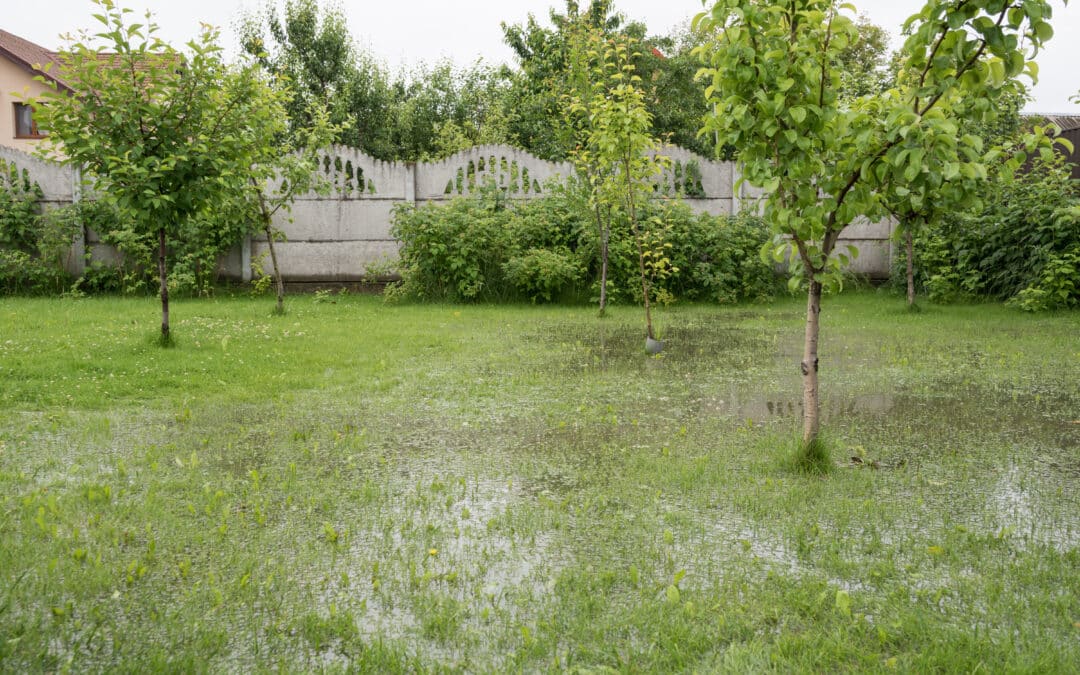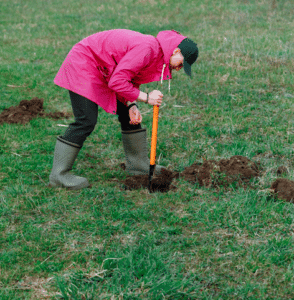What is a percolation test?
A percolation test often referred to as a “perc test,” determines how quickly water can move through the soil when saturated. You might already have observed the impacts of this during a heavy rainstorm! Perc tests can be done by either a licensed professional (we can help you find those!) or by you!
Why does a perc test matter?
The results of a perc test will help establish site suitability for your chosen green infrastructure technology, and also give you an indication of project costs.
Basically poor percolation test results will make it more expensive project wise. The better the results, the closer the “market average” the installation will be!
-Rainplanner Allen Mills
Reasonable percolation rates can assume baseline market per sq. ft costs. Low percolation rates will increase costs to install a stormwater feature, etc.
How to do a percolation test
Step 1- Dig the hole(s)
Dig the hole(s) in the general area identified in your Rainplan! Avoid tree roots and areas under the tree drip line. The location should reflect your aesthetic preferences and your Rainplanner’s technical expertise! See below to determine the sizing and amount of holes. You need the following tools:
- Post hole digger or shovel
- Gloves
- Ruler
- Garden hose or other water source
Rain Gardens: One test hole for every 100 square feet of garden.
- If it does not pass, reconsider the location or consider a conservation planting area instead
Permeable Pavement: One test hole adjacent to the driveway or paved area, halfway between the house and property line OR, where possible, close to the paved area
- For these, it is recommended to add an underdrain if it does not pass.
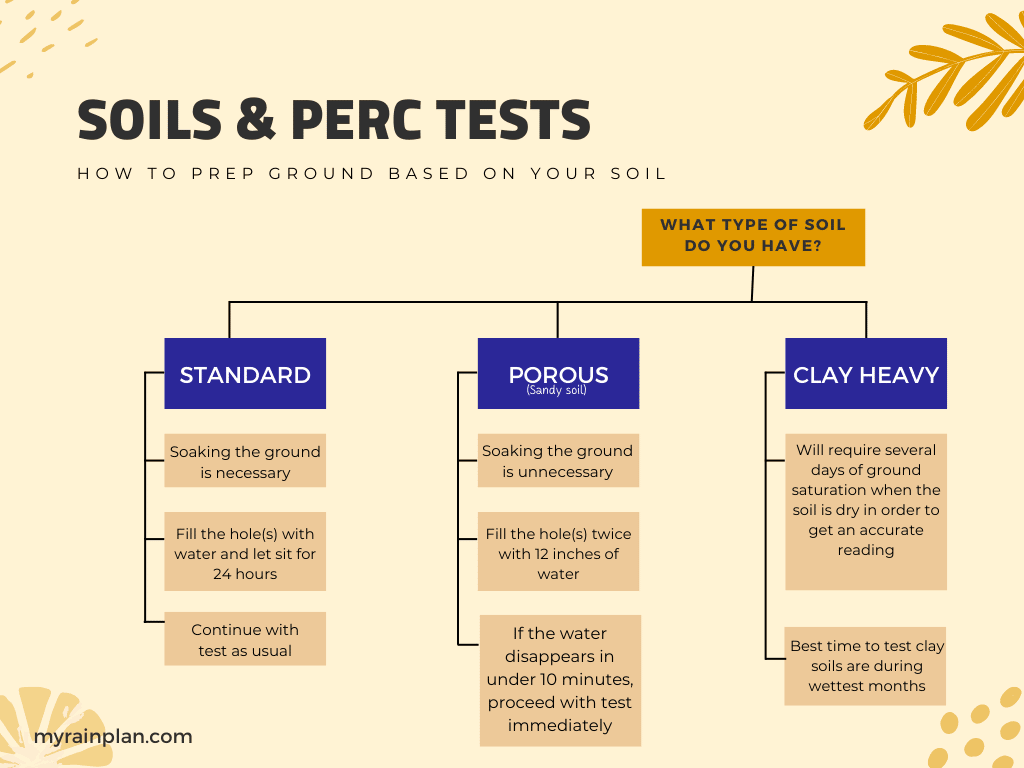
Step 2- Fill the hole(s) and saturate the soil.
If possible, perform the test when the surrounding soil is already saturated (e.g., the day after a rain). If there is no rain, that is okay, you can still saturate the soil. Fill the hole(s) with water, carefully avoiding washing soil into the hole(s). Finally, soak the surrounding soil as well. 24 hours after you complete this step, refill the water and begin Step 3!
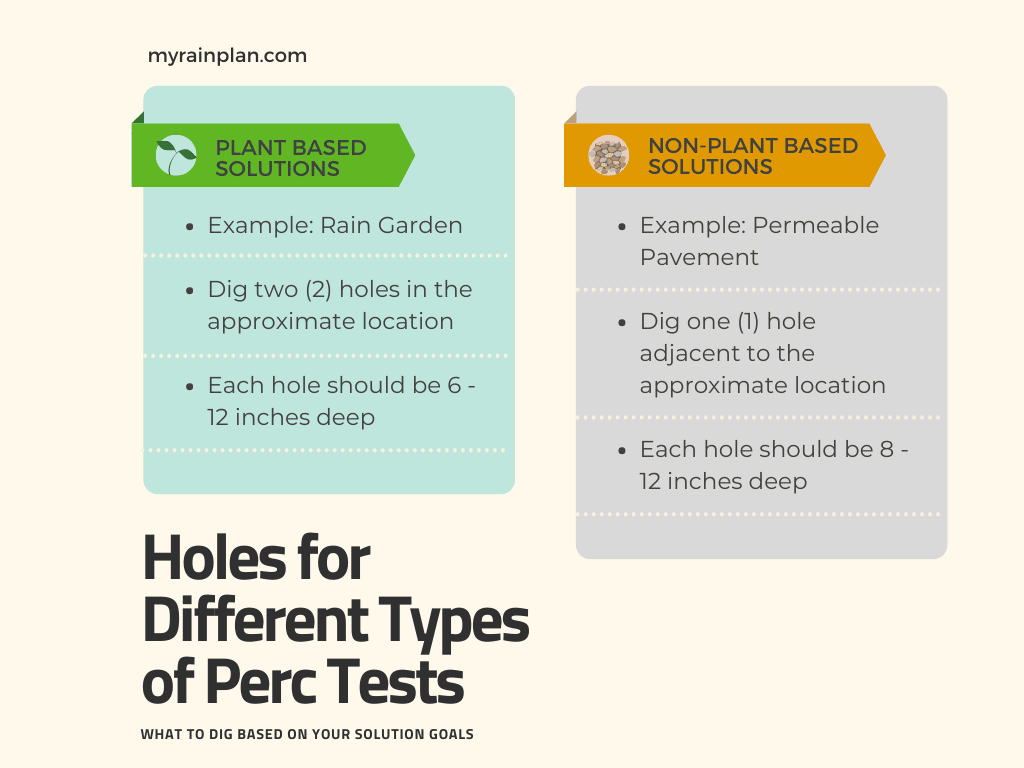
Step 3- Calculate the percolation rate
It is recommended to calculate the percolation rate a full day (at least 24 hours) after the saturation process (Step 2), except in sandy soils as previously discussed. To measure the rate, you will measure (1) the amount of water depth and (2) the time.
If the hole(s) is completely empty, the calculation is unnecessary because the site is ideal for a rain garden because the minimum percolation rate has been met.
If there is water in the hole(s), record the water depth(s). Below is a downloadable table for recording measurement data.
IMPORTANT PRO TIP! Be sure to take a photo of each measurement. Many incentive programs, engineers, etc require photos of each measurement in their paperwork requests.
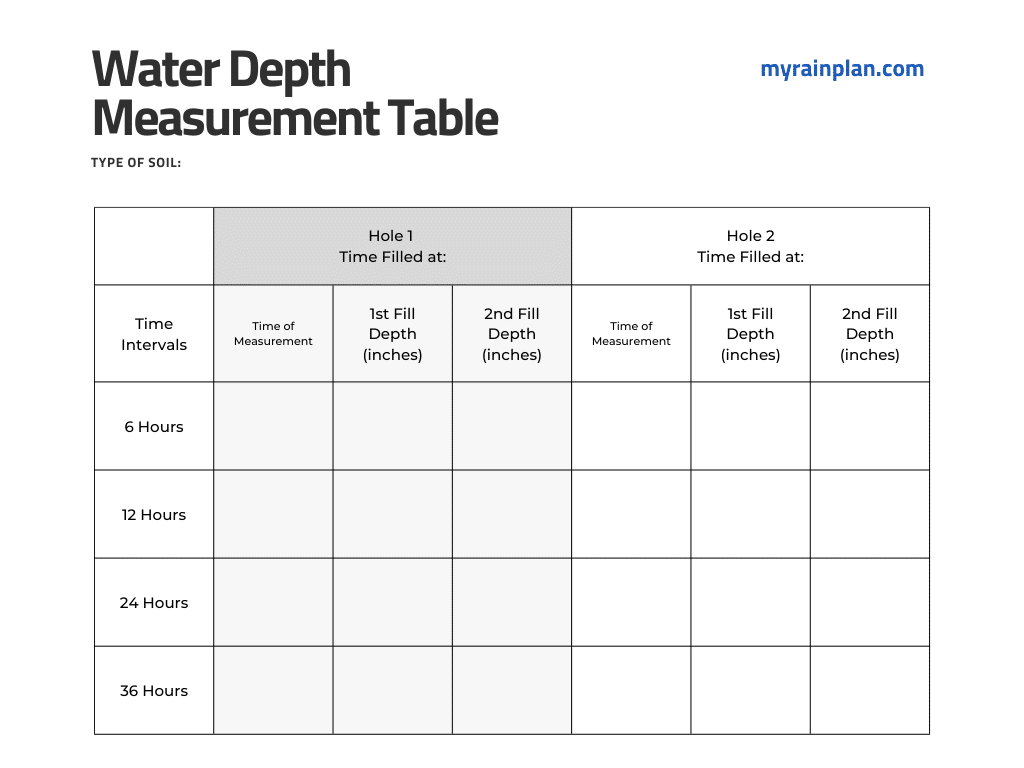
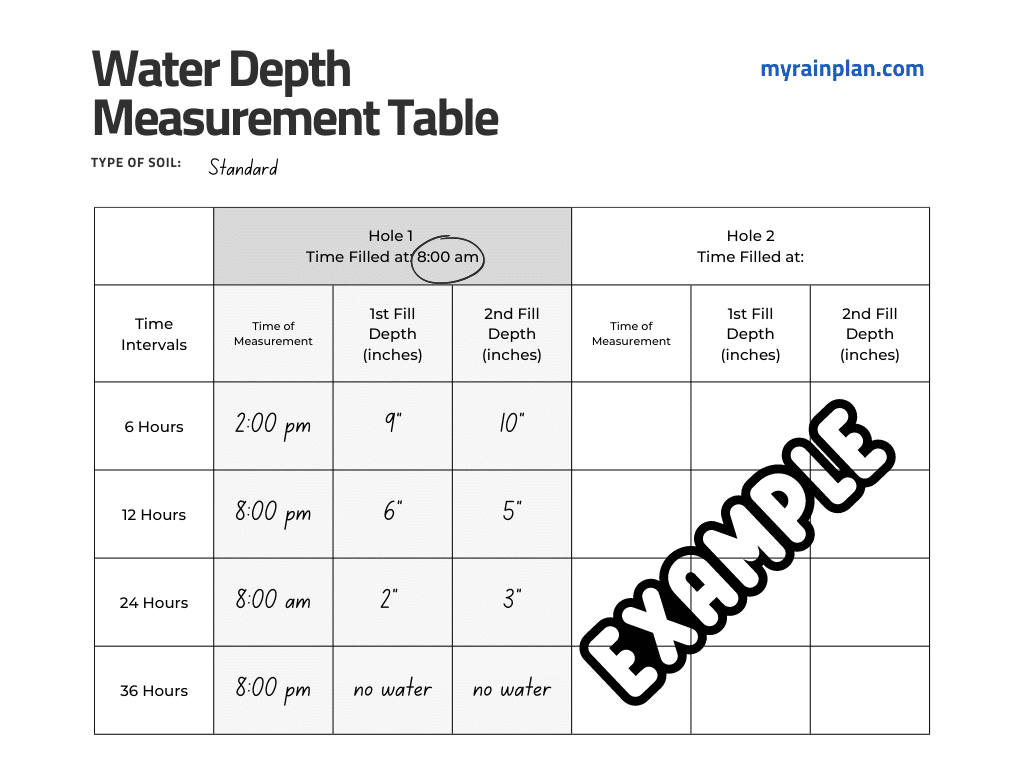
Considerations
- Local requirements may be more stringent, so contact your local health or planning department for requirements in your area; specifics for conducting a percolation test may vary from those given below
- Before you dig, we would recommend confirming with your local utility provider for any underground infrastructure
- Do not conduct percolation tests on disturbed soil or frozen ground
- The hole(s) must drain within 36 hours each time to “pass” – in this context, “pass” means favorable or ideal site conditions
- Permeable Pavement: One test hole adjacent to the driveway or paved area, halfway between the house and property line OR, where possible, close to the paved area
- For these, it is recommended to add an underdrain if it does not pass
- Rain Gardens: One test hole for every 100 square feet of garden
- If it does not pass, reconsider the location or consider a conservation planting area instead
- Rain gardens generally aren’t meant to pond (or hold) water for long periods, as a retention area would. Ideally, during a 1-inch, 24-hour rain event – your soil should completely perc (i.e., drain completely) in under 36 hours.
- If it is slow to drain, the rain garden holding area should be increased. Percolation rates of less than 6 inches per day would be considered “slow.” If it does not drain in the 36-hour window, you should relocate the rain garden site.
Sound like a lot of work or still unsure of what to do? We can find you the right solution for your property and get connected to a service provider who can run these tests for you.
Type in your property address to get started!
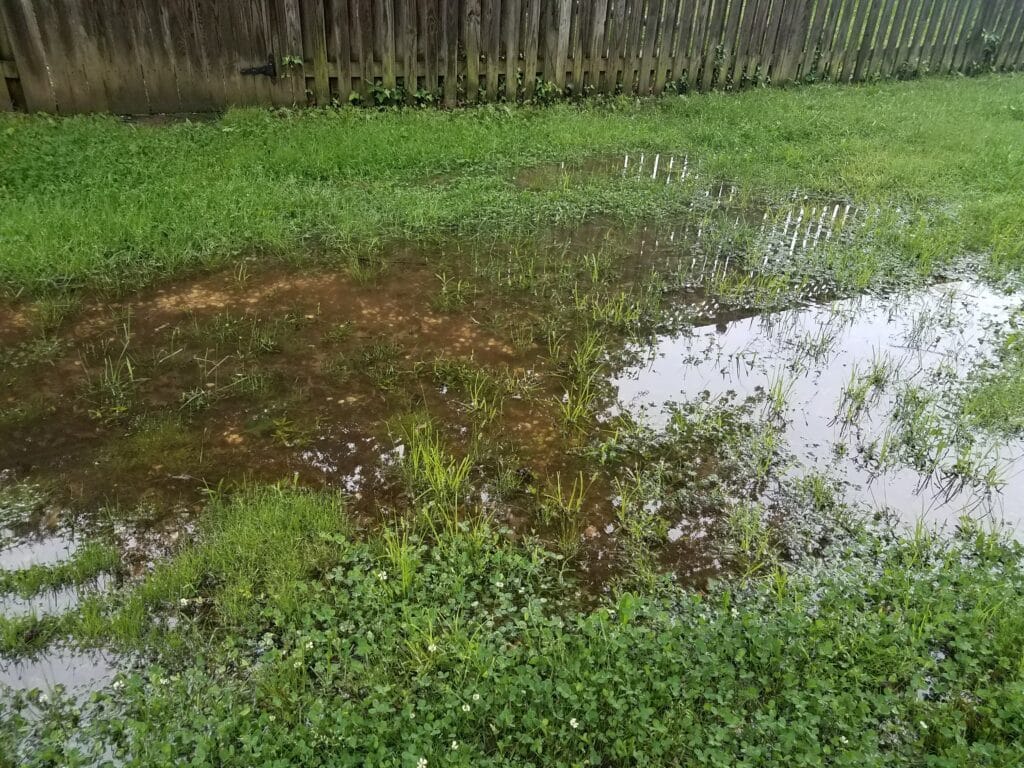
Sources:
- Missouri Botanical Garden: https://www.missouribotanicalgarden.org/sustainability/sustainability/sustainable-living/at-home/rainscaping-guide/is-a-rain-garden-right-for-your-site/questionid/365/afmid/8228#1356735-conduct-a-percolation-test
- University of Nebraska Lincoln, Extension: https://extensionpublications.unl.edu/assets/pdf/ec1262.pdf
Montgomery County Rainscapes Program: https://www.montgomerycountymd.gov/water/Resources/Files/rainscapes/How-to-do-a-Perc-Test.pdf

